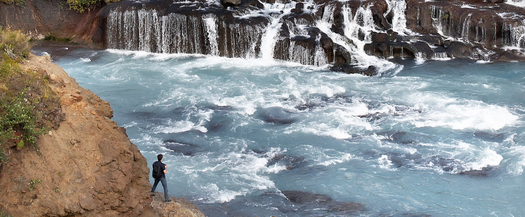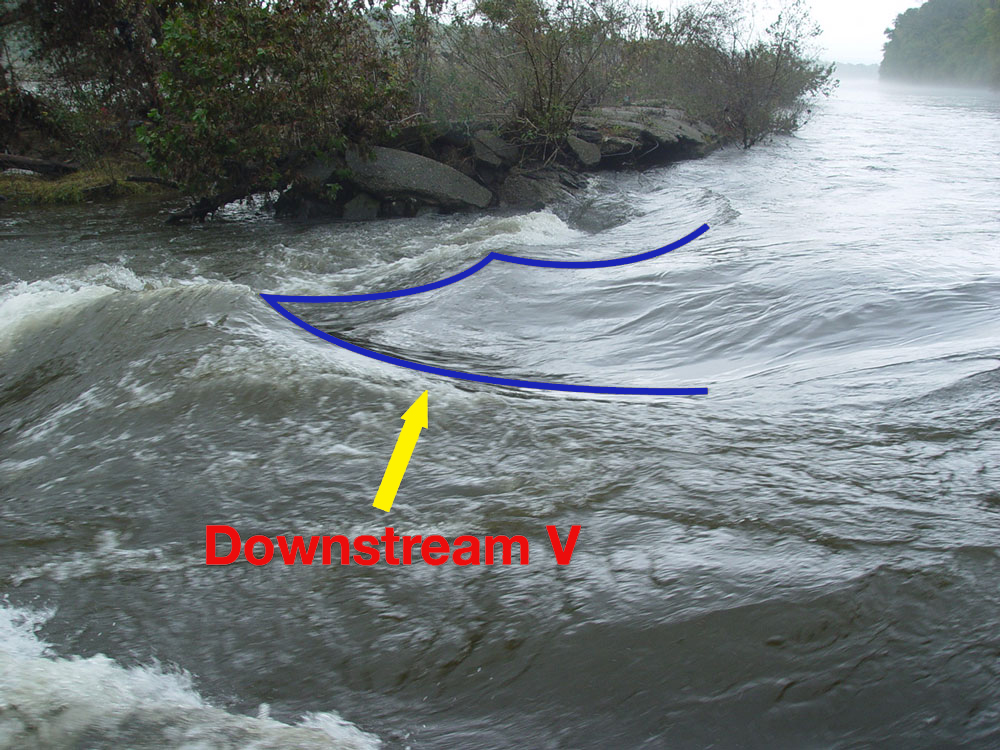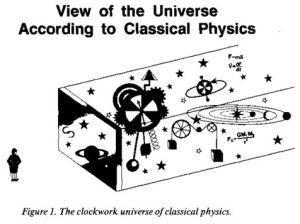Systems thinking is not one thing but a set of habits or practices[3] within a framework that is based on the belief that the component parts of a system can best be understood in the context of relationships with each other and with other systems, rather than in isolation. Systems thinking focuses on cyclical rather than linear cause and effect. —wikipedia
Here’s a metaphor that illustrates this concept.
Visualize in your mind’s eye a river flowing downstream. Imagine you are one single droplet of water in that river. 
This is, after all, the way we live our lives. We are single entities in a much larger world.
lives. We are single entities in a much larger world.
What does the world look like from the perspective of a single droplet of water? It’s pretty chaotic. You can see other droplets around you, getting pushed and pulled around, hitting rocks, moving in all directions. Things are constantly changing with seemingly arbitrary motion and little if any pattern. You can’t tell when you’re going to hit a rock or how the current will move you next.
Is this not how life feels?
Now imagine that it were possible to see the same river from a different perspective, standing on the bank.
All of a sudden things look completely different. You can see the movement of the current moving down stream. But the waves are not moving downstream. In fact the waves are standing still, constantly in one place.
Moreover you can now see certain patterns. You can see places where the water forms a V shape, for instance. (A downstream V indicates a channel thru the rocks.)  Magically, the world is standing still. The water molecules that make up the V are constantly changing but the V pattern itself stays in the same place and doesn’t change except with perhaps minor variations. Seeing these patterns brings order into a previously chaotic, seemingly arbitrary world.
Magically, the world is standing still. The water molecules that make up the V are constantly changing but the V pattern itself stays in the same place and doesn’t change except with perhaps minor variations. Seeing these patterns brings order into a previously chaotic, seemingly arbitrary world.
 So now move back to inhabiting one single water droplet. This time, however, you come to this perspective with a memory of what it was like to be standing on shore. Now you may be able to see yourself as more than an independent, isolated being but as connected with all others around you. You see your place in the world. You experience your interrelationship with all around you and know that you are part of something larger than yourself.
So now move back to inhabiting one single water droplet. This time, however, you come to this perspective with a memory of what it was like to be standing on shore. Now you may be able to see yourself as more than an independent, isolated being but as connected with all others around you. You see your place in the world. You experience your interrelationship with all around you and know that you are part of something larger than yourself.
What does this have to do with social change? Tom Atlee at the Co-Intelligence Institute writes:
“the old paradigm sees humans as bodies and personalities to be decorated, manipulated, defended or attacked. Its politics specializes in such things. The new paradigm, from which our new politics is evolving, sees us in terms of the personal creativity, meaning, and identity which arise from within – in a dynamic, mutually-defining dance with the world around us. The new paradigm says that this heart-to-heart dance is who we really are, and what the world is. Its politics, of course, embodies that perspective.
A politics rooted in such principles is transformative because its focus on creative relationship (rather than on forms) frees it from the dynamics of attack and defense and makes it more naturally adaptable – freely responding to and participating in change. Like protoplasm and spirit, this politics can create and abandon forms, as necessary, while it, the creative force, survives them all. That very fact, of course, is what makes it sustainable.”